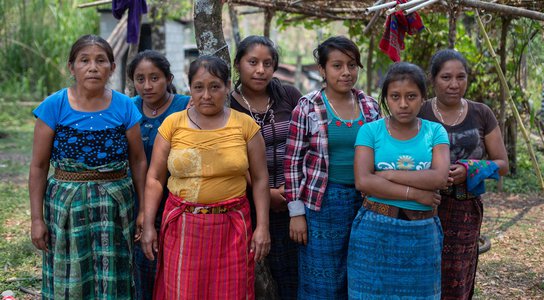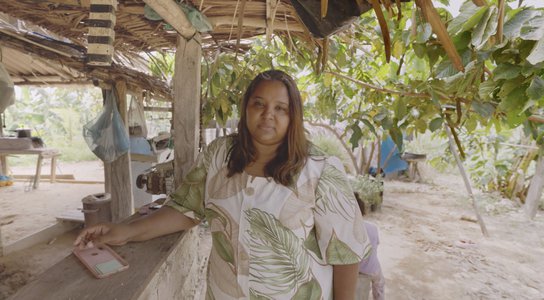In the run-up to COP26, we wanted to develop a digital campaign that highlighted the political capital held by industries that devastate the environment. Over 160 influential voices and 100 organisations from 15 different countries joined – this is how it happened.
The undue influence of polluters on policy makers is a complex topic that is relatively unspoken about in the online climate space – so, how could we start this conversation in a way that would engage vital voices in the run up to the COP26 climate summit?
Enter: Toxic Friends.
We
aimed to put our world leaders in the spotlight, and urge them to ignore the
false solutions and greenwashing which would be put forward by big corporations
at COP26. Instead, we wanted to amplify the voices of those already feeling the
impact of the climate crisis – who are too often left out of the room where decisions are made.
The Toxic Friends campaign
Toxic Friends exposed the dangerous tangle between the corporate and political worlds. It exposed the hypocrisy of corporations claiming to offer solutions to the climate crisis, when they are in fact a huge part of the problem. It shone a light on the abuse and violence too often faced by land and environmental defenders at the hands of corporations.
Throughout the campaign, conceptualised by our partner agency Catnip, we demanded politicians and global leaders pledge to break off their ties with the world’s biggest polluters.
By putting a spotlight on these relationships, we showed that corporations' very existence within these spaces has to be delegitimised entirely. When politicians “break up” with their toxic friends, those on the frontline of the climate emergency can claim that space and offer real, lasting solutions.We’ve all experienced a toxic friendship, and friendships don’t get any more toxic than those between polluters and politicians. It’s time to #EndPollutersPower.
How do we spot toxic friendships at the highest levels of power?
1) They’re manipulative
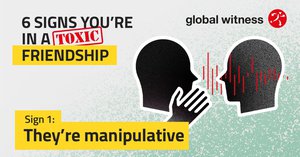
Big businesses are operating behind a mask of responsibility, spending millions to suggest they are operating in a way that benefits people and the planet, whilst actually using their influence and power to help shape policy that directly benefits few but their bottom line.
2) They make promises they don’t keep

3) It’s never their fault

4) You’ve caught them out in a lie

Fossil fuel companies peddle the lie that fossil
gas is a greener alternative, and many other polluters like to promote ‘unproven’
(read: completely unfeasible) solutions to the climate crisis, such as carbon
capture.
5) They pretend to be someone they’re not
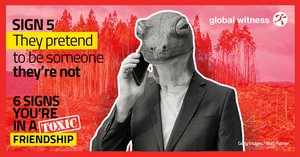
6) They hurt the people you care about
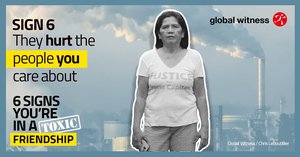
Toxic friends in numbers
The launch tweet for Toxic Friends in August was our top performing tweet that month, with 180K+ impressions and 2,214 engagements. Our reach was bolstered by a notable amplification from Greta Thunberg, and further support from the likes of Krishnan Guru-Murthy, Will Yeates, Edward Davey, Isabelle Axelsson, Reverend Yearwood and Dr Charlie Gardner.
Throughout the campaign, we reached out to a curated list of influential voices in the climate change conversation for their support in amplifying our messages. We engaged over 160 people from over 15 countries, including Zainab Waheed (Pakistan), Anita Soina (Kenya), Nyombi Morris (Uganda), Samela Awia (Brazil), Isaac Ssentumbwe (Uganda) and Evelyn Acham (Uganda), and many (many) more.
We built up relationships with partner organisations like UK Youth Climate Coalition, Fridays For Future Digital, Fridays For Future MAPA, Parents for Future, and Glasgow Calls Out Polluters and many more. It marked the beginning of meaningful collaborations which will last well beyond COP26.
What did we learn?
Toxic Friends was the first of its kind for Global Witness (and we say this proudly!). We employed tactics that we haven’t used before, including upping our meme game when talking about the failure of our leaders to solve the climate crisis.
We found that a simple narrative that encapsulated all of our top strategic priorities was effective. It allowed us to amplify our existing work and support a more integrated and cohesive message to our audiences.
We borrowed a handful of tactics from political and community organising. For example, we spent months building relationships with a vast array of individuals through Twitter and Instagram and building a network of highly influential voices (or a digital army, as some like to call it!).
This allowed us to collaborate on content creation, raise awareness of the campaign, increase social media audience numbers, and most importantly, establish longer-term relationships which will exist past COP26 and shape the future of Global Witness’s campaign work.
Even though COP26 has come to an end, the fight for climate justice hasn’t.
